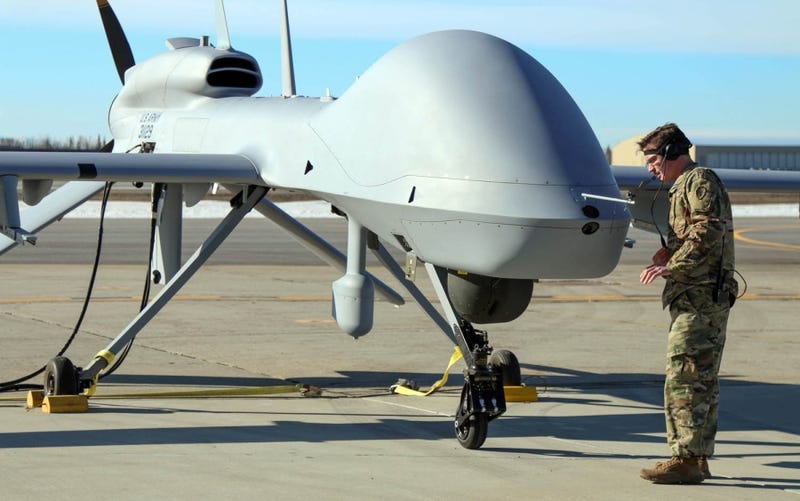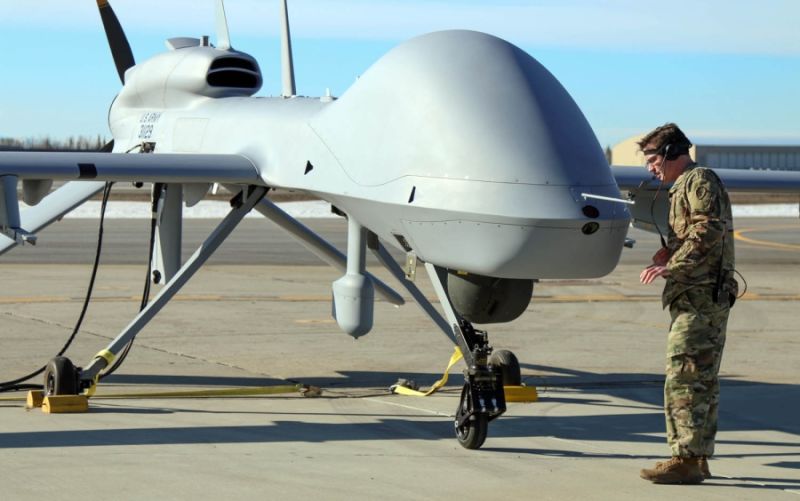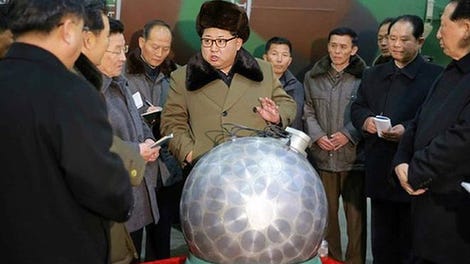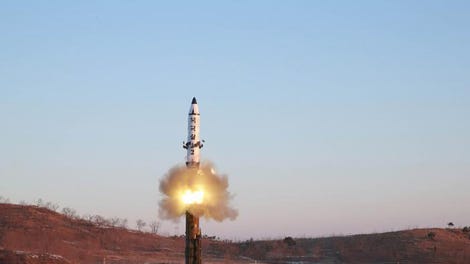
One week after North Korea launched four ballistic missiles into the Sea of Japan, the United States has announced it is permanently deploying attack drones to South Korea for the first time.
Advertisement
The deployment is likely a show of force reaction to Pyongyang’s missile launch tests over the past few months, Daniel Pinkston, a professor at Troy University in Seoul, told CNN:
“If North Korea thought they could continue their accelerated pace of weapons testing and deployment without a response, they certainly were wrong,” Pinkston told CNN. “(With) the recent North Korean behavior, and with the Foal Eagle exercise going on, I think it’s a good time (to deploy).”
The MQ-1C Gray Eagle Unmanned Aircraft System will be assigned to the Second Combat Aviation Brigade of the Second Infantry Division at Kunsan Air Base in the Republic of Korea to support “intelligence, surveillance and reconnaissance capability to U.S. Forces Korea and our ROK [Republic of Korea] partners,” according to a press release by the United States Forces Korea.
Advertisement
The MQ-1C Gray Eagle can stay in the air for 27 plus hours, and travel up to 25,000 feet at a speed of 150 knots, according to a description of the drone on the U.S. Army’s website. It can also carry four AGM-114 Hellfire missiles.
This deployment is a follow up on the recent decision to send Seoul the THAAD (or Terminal High Altitude Area Defense) system to protect the country from a possible ballistic missile strike from Pyongyang. However, the THAAD system is getting mixed reviews in South Korea. While many realize that North Korea is an unpredictable player, many locals favor a diplomatic solution to the crisis.
Recently impeached former President Park Geun-hye was more of a North Korea hawk; her potential replacement, Moon Jae-in, is viewed as a candidate who will pursue a softer approach.
Advertisement
Sponsored
The THAAD system also presents a diplomatic issue with Beijing, as CNN notes:
China opposes THAAD because it sees it as a threat to its own security interests. Among other things, Beijing worries that THAAD’s advanced radar system could be used for surveillance purposes.
Many in the Chinese foreign policy establishment see THAAD as just as big a threat to China as Pyongyang’s nuclear program, according to professor John Delury of Yonsei University.
Though THAAD is just a defensive system, the radar and surveillance capabilities worry the Chinese. Now they’ll have to worry about attack drones parked in their backyard, too.
“The US has a reputation — at least in China — for not being particularly strong or interested or really wanting to or have the ability to defend its interests,” says Chiu. “So Beijing is going to react badly to this.”
South Korea is stuck in a military and diplomatic quagmire. It has an aggressive, isolated and extremely unpredictable neighbor to its north with nuclear capabilities and a mentality that Seoul is its prime enemy. Obviously, it makes sense for the south to protect itself. Unfortunately, it has a nervous neighbor and world power in Beijing that is both concerned about North Korea’s instability and agitated with the defensive moves Seoul is taking to protect itself through a system they feel is nothing more than a spy device.
Bringing the MQ-1C Gray Eagle Unmanned Aircraft System into the equation doesn’t do much to soothe those concerns. Indeed, the Gray Eagle is a formidable fighting machine that will bolster South Korea’s defense, but it is likely to only intensify tensions that are already festering in the region.
















